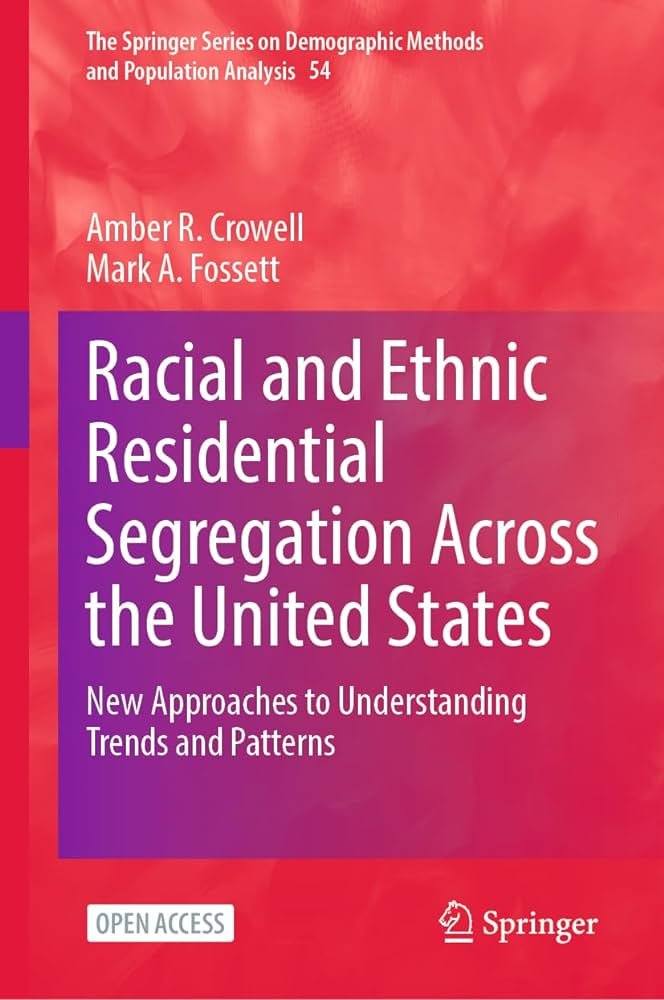By Amber R. Crowell & Mark A. Fossett
This monograph builds on innovations in segregation measurement and analysis, previously developed by one of the authors of this book, by conducting empirical analyses of racial and ethnic residential segregation across a wide and comprehen-sive selection of communities in the United States. Past studies of residential segregation have been limited by a well-known and difficult challenge, which is that most segregation indices are prone to a sometimes very problematic upward bias that inflates segregation scores and makes it difficult to measure segregation at a single point in time, follow segregation patterns over time, and compare segregation across groups and communities. These problems are worse when using small spatial units such as census blocks, when the groups in the analysis are extremely imbal-anced in size, and when population counts are small. This has resulted in a literature that is heavily focused on segregation in a selection of the largest urban metropolitan environments, with only limited studies focused on nonmetropolitan communities or small racial and ethnic populations. Even so, restrictive case selections do not directly solve the problem of index bias. Fortunately, we have the solution to index bias, in addition to other solutions that address related problems with segre-gation measurement, which allow us to reanalyze residential segregation patterns and include more communities and contexts. In this book, we examine White-Black, White-Latino, and White-Asian residential segregation across metropolitan, micro-politan, and noncore county communities from 1990 to 2010, giving special atten-tion to how our findings may differ from what previous studies have found with measures that were not corrected for index bias and other related issues. We find that under the conditions where index bias is less likely to be a problem, our results track those from previous studies. But these communities do not make up the majority of cases, and in most communities our findings deviate in substantial ways from previous findings. We also employ new methods for linking micro-level processes of locational attainments to overall segregation patterns and develop a more complex understanding of residential segregation dynamics. This leads us to conclude that it is important to use our findings as benchmarks for residential segregation patterns over this time period and to adopt the methods of measurement and analysis that we endorse throughout this book for residential segregation research.
United States, Springer. 2023, 260pg





